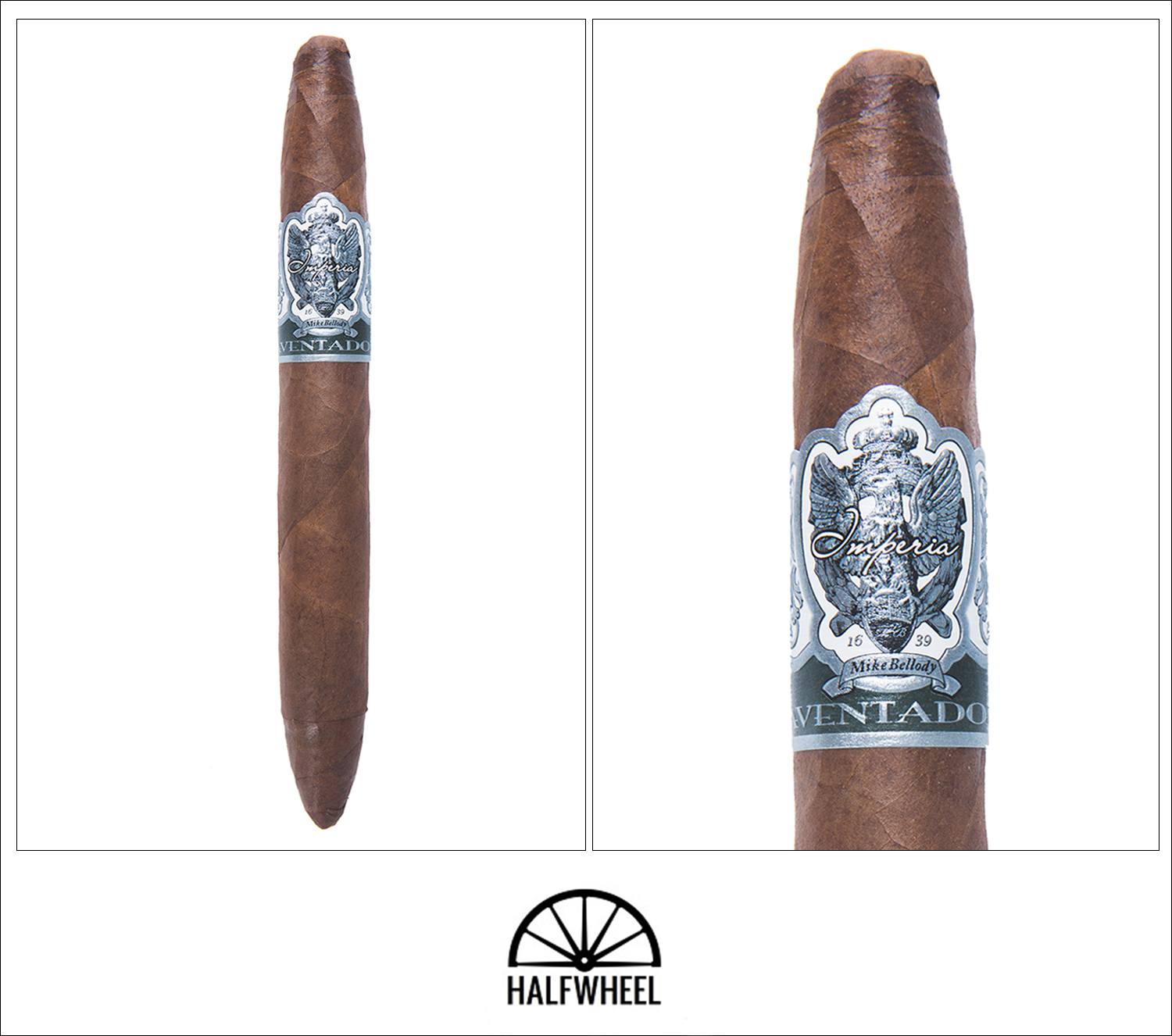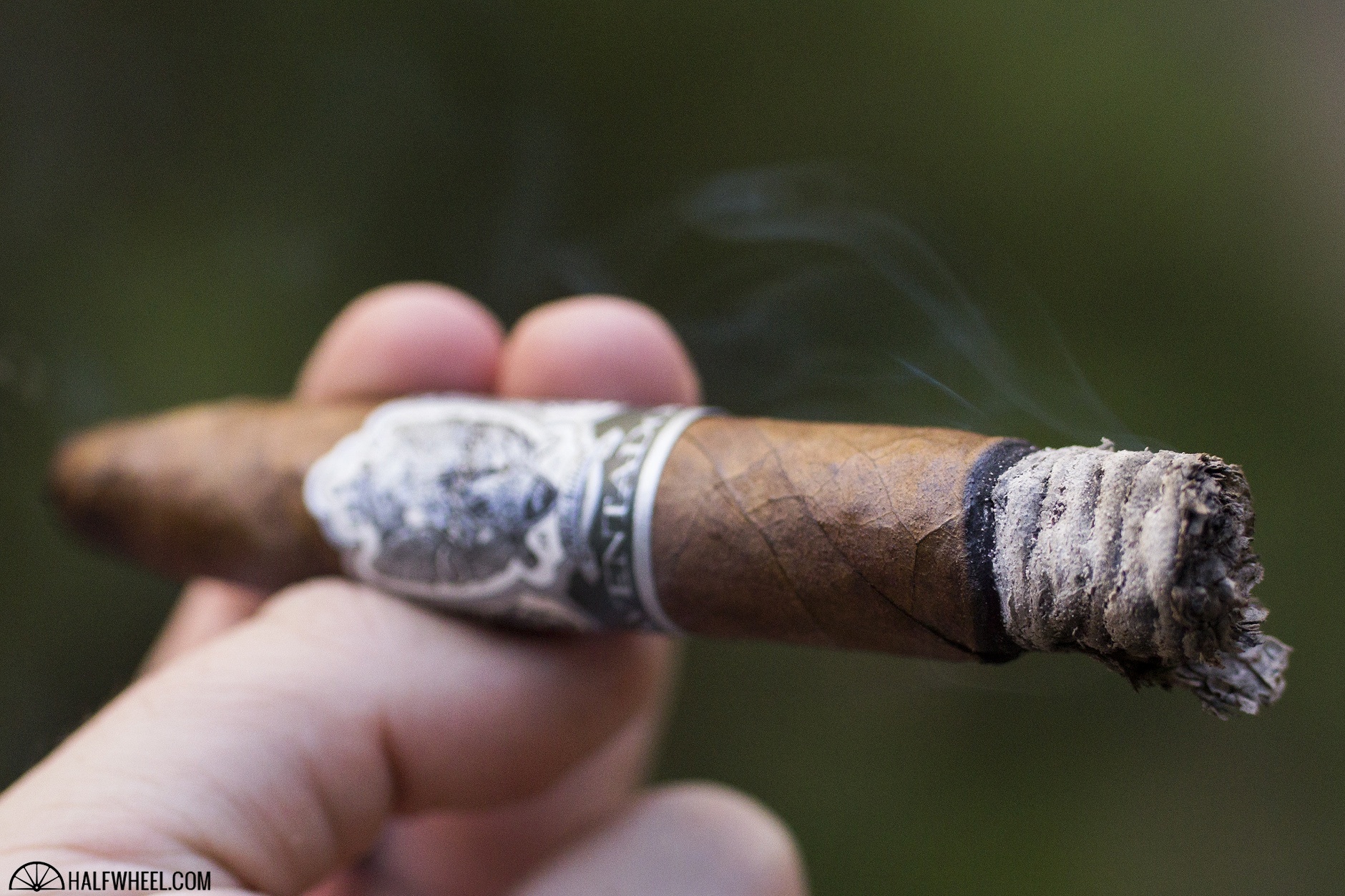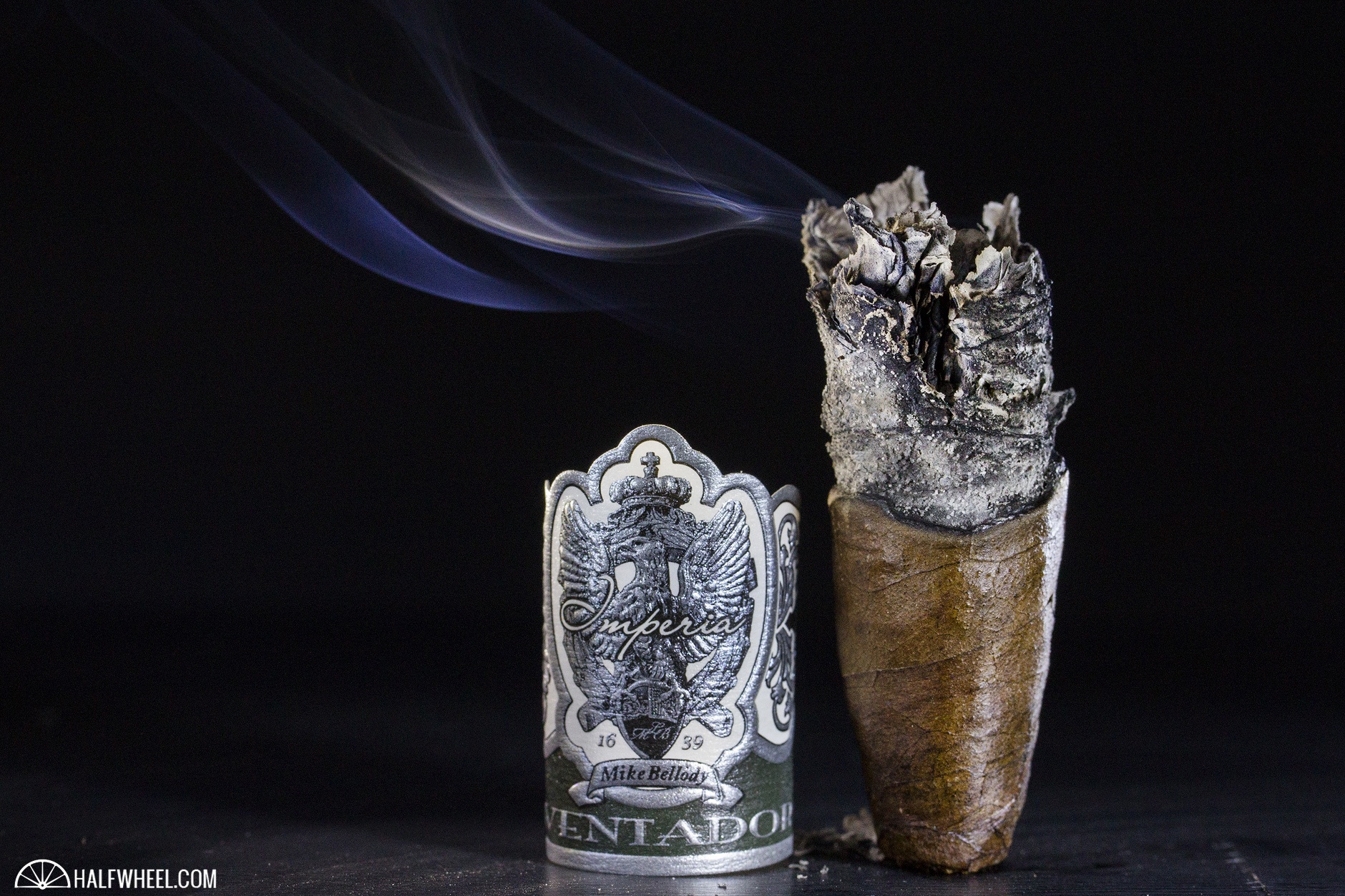For MLB Cigar Ventures’ fourth release, Michael L. Bellody built upon his core line, the Imperia, by adding a third extension that promised “incredible complexity” and more spice and pepper than the original Imperia or the follow-up Imperia Islero.
To do this, Bellody used an Ecuadorian wrapper, Dominican binder and a filler that contains Dominican tobacco and Pennsylvania broadleaf. It’s that last component that Bellody says delivers both subtle spice and a natural, earthy sweetness and provides a distinct blend from his other three releases.
Getting its widespread release in April 2017, the Imperia Aventador is offered in five vitolas, which have been consistent among the other Imperia blends.
- MLB Cigar Ventures Imperia Aventador Fundador (7 x 50/30) — $15.20 (Boxes of 10, $152)
- MLB Cigar Ventures Imperia Aventador Gordo (6 x 60) — $11.90 (Boxes of 20, $238)
- MLB Cigar Ventures Imperia Aventador Pita (5 1/2 x 44) — $9.10 (Boxes of 20, $182)
- MLB Cigar Ventures Imperia Aventador Robusto (5 x 52) — $10.60 (Boxes of 20, $212)
- MLB Cigar Ventures Imperia Aventador Toro (6 x 50) — $11.30 (Boxes of 20, $226)
The Fundador vitola is coming in 10-count boxes, while the other four sizes are packed in 20-count boxes.

- Cigar Reviewed: MLB Cigar Ventures Imperia Aventador Fundador
- Country of Origin: Dominican Republic
- Factory: Quesada Cigars
- Wrapper: Ecuador
- Binder: Dominican Republic
- Filler: Dominican Republic and Pennsylvania
- Length: 7 Inches
- Ring Gauge: 50/30
- Vitola: Perfecto
- MSRP: $15.20 (Boxes of 10, $152)
- Release Date: April 7, 2017
- Number of Cigars Released: Regular Production
- Number of Cigars Smoked For Review: 3
This perfecto features a traditionally capped head as well as a cap at the foot, giving a bit more distinction and presenting some smokers with the obvious question about how to best handle it. While the seams aren’t perfectly flat, the cigar is still rolled well and offers just a bit of give. The wrapper is evenly colored with a chocolate brown color and offers an abundance of veins and tooth. With the double perfecto capped at both ends, I’m left to try and get some aromas off the wrapper, which I have rarely found to be beneficial. I get a bit of chocolate but little else, while the closed foot nearly negates the cold draw. What I do get is reminiscent of damp wood with some bark and steak sauce, and in the one sample where I clipped the closed foot, air moves quite well.
I don’t believe that there is a right approach to the foot of the cigar; you can either clip it off or burn through it, and save for the one sample I clipped so I could get some pre-light notes on the Imperia Aventador, I always opt for the latter method since it provides an extra blast of flavor from the wrapper. Once lit, the cigar becomes a wealth of flavors, and an easy draw facilitates a good amount of smoke and air movement. Chewy notes of chocolate brownie are intertwined with the tanginess of woods and bark and pepper is used minimally but effectively to add some tingle to the tongue. More pepper comes out through the first retrohale, and the cigar starts shedding what sweetness is had from the chocolate in favor of more pepper and a more robust profile, while retrohales become a bit more enjoyable as I start to get a bit of tar on the lips that leaves a funky finish and may necessitate another clip of the cigar’s head. Other than that the cigar has performed quite well in the first third.

By the start of the second third, the cigar is much more earthy in its profile, showing a bit less pepper and transitioning the chocolate into rich soil. The biggest change I find at this point comes by way of the texture of the smoke, as it comes across a bit thinner than it did at the start of the cigar. As the chocolate fades the earthy note becomes drier as a bit of chalk comes along, and while I get the same mouth-drying sensation as cigars with a strong wood taste, I don’t get that flavor here. By the midpoint, the transition is quite pronounced, and it’s quickly apparent that I’m smoking a much different cigar than I was just under an hour ago. Combustion is also becoming a bit of an issue, as I find myself needing to give the Aventador a relight more often than I would like to get the cigar burning properly.

With the bands sliding off fairly easily, the final third gets underway as largely a continuation of the second third, though there are some changes beginning to make themselves known. First, the combustion continues to be an issue, so much so that I’m wondering if all the relights or what appears to be a bit too much residual moisture is having an adverse affect on the flavor. I begin to get hints of tar and metals on the tip of my tongue, which detours the cigar from the otherwise decent flavor profile it had been offering. With a little over two inches left, there is a surge of nicotine from the Aventador and I can feel a bit of physical reaction in the upper chest. The flavor continues to be rocky and now even more metallic, making it challenging to discern just how much pepper is left in the profile, as I can taste it but it doesn’t seem to have the same effect that it did earlier. One cigar finished with some combustion issues and a slightly metallic taste, while the others smoked down a good bit farther and kept that unpleasantness to a minimum.

Final Notes
- I’d be remiss if I didn’t mention how well the color of the ash matched the band at points.
- While it may not seem like a big thing, I really think burning the foot, as opposed to clipping it off, is the way to go. That extra bit of flavor does some good things for this cigar, particularly since they are the introductory puffs.
- The second half of each of the three samples could have benefitted from some dryboxing, as they struggled to burn with amazing consistency. This is one of the downfalls of the double capped design; it makes it for the core of the cigar to shed its excess humidity during aging.
- While it didn’t seem to matter as much in the first half of the cigar, the second half definitely benefits from having more of the cap cut off. I’m reluctant to take off any more than necessary, but in the case of the Imperia Aventador Fundador, I made that extra snip and was rewarded for it.
- The Aventador may be the strongest of the Imperia trio, but Bellody says it doesn’t quite reach the level offered by his other line, the David P. Ehrlich Tremont.
- Bellody began mentioning the Aventador project back in January 2016, saying it would be at the 2016 IPCPR Convention & Trade Show. It wasn’t, at least formally, however.
- I haven’t smoked the other sizes of the Imperia Aventador, but I’d easily purchase and light up any of the other sizes, with the exception of the 6 x 60.
- There’s a fairly well known car that uses the Aventador name.
- Both products get their names from fighting bulls, in this case an animal that fought in Zaragoza, Spain in 1993. It earned the Trofeo de la Peña La Madroñera for courage in the arena.
- The cigars for this review were purchased by halfwheel.
- Final smoking time was two hours and 10 minutes on average.
- Site sponsors STOGIES World Class Cigars (713.783.5100) has the Imperia Aventador.
When a cigar starts with impressive, flavorful complexity and finishes with an off-putting metallic note that gets compounded by combustion issues, it's challenging to put together a tidy summary that still sounds encouraging, or at least optimistic about the cigar, yet that's how I feel about the Imperia Aventador from MLB Cigar Ventures. If the first third is any indication of what the cigar is capable of, and if I felt more confident that the issues of the final third will iron themselves out with time, I'd say rush out and buy a box. I can't say either with a ton of confidence at this point, but I'm at least hopeful that both will prove true and this will become the cigar I think it's capable of becoming.



